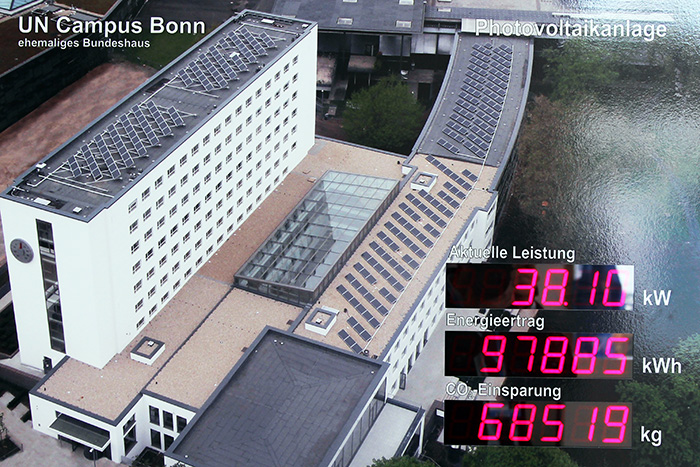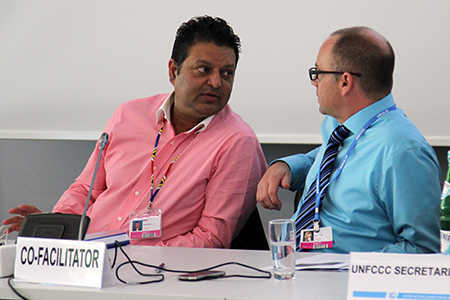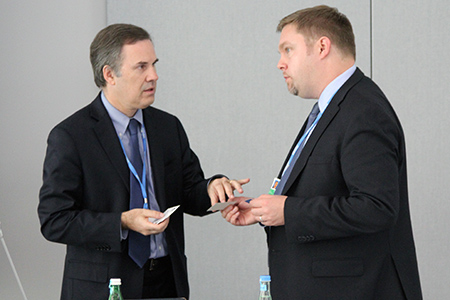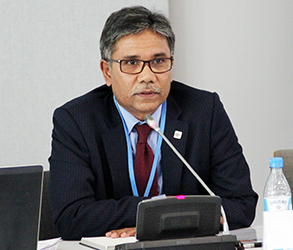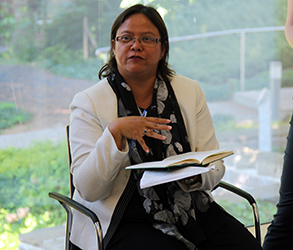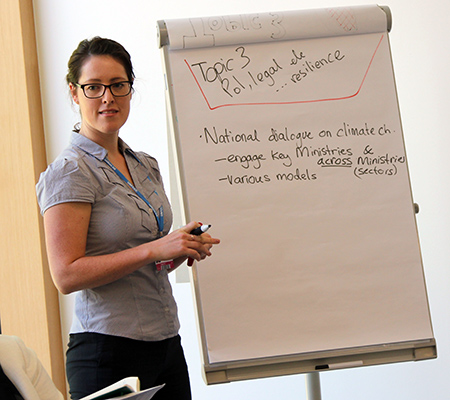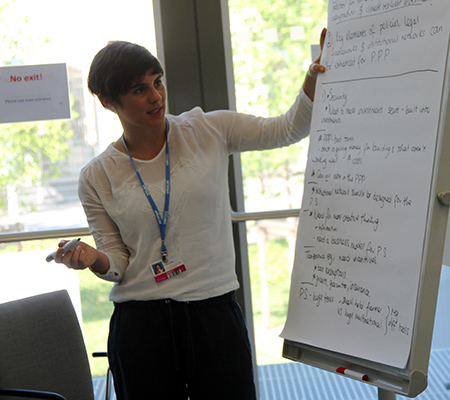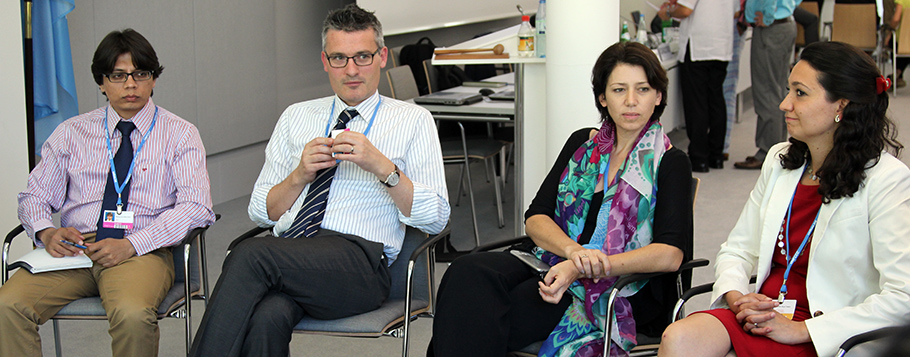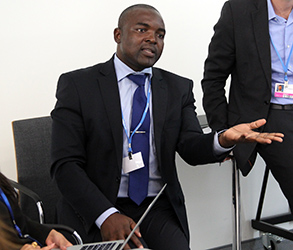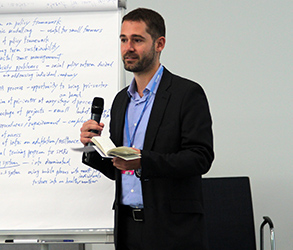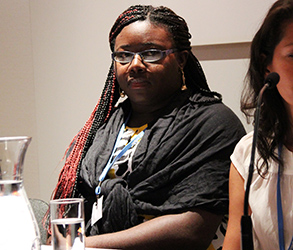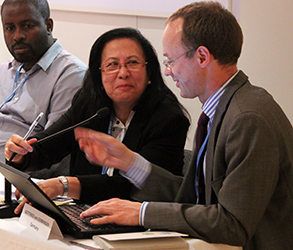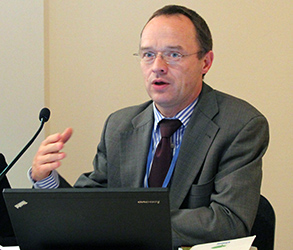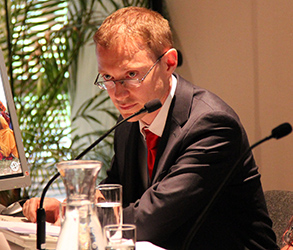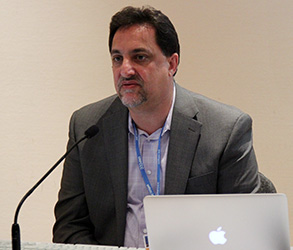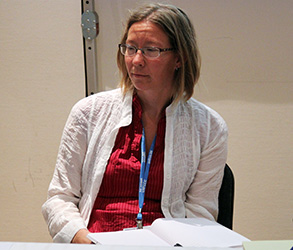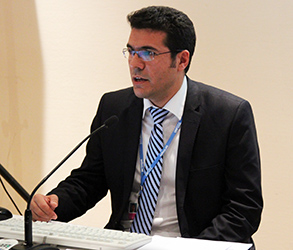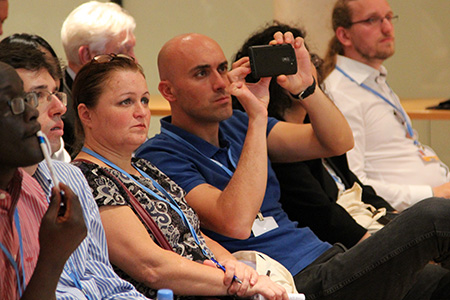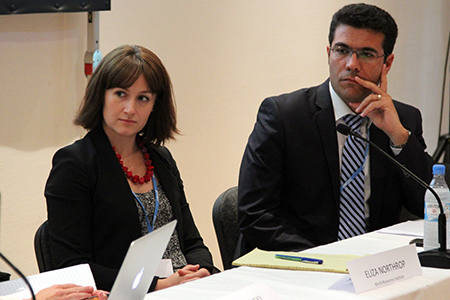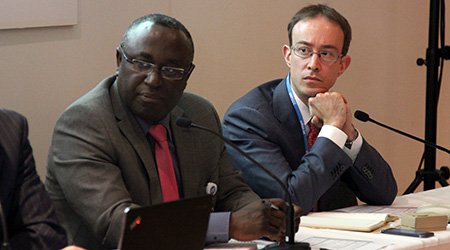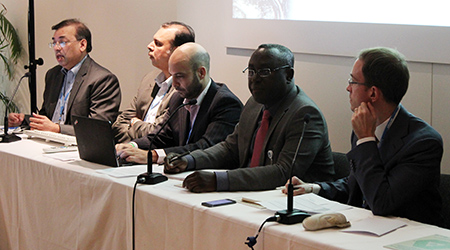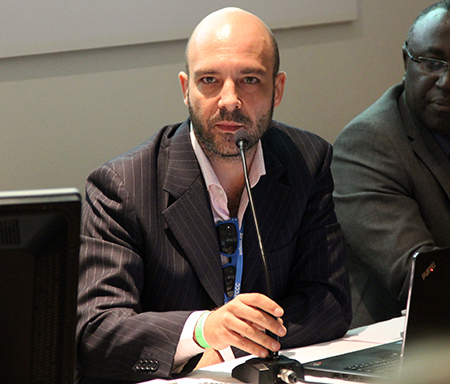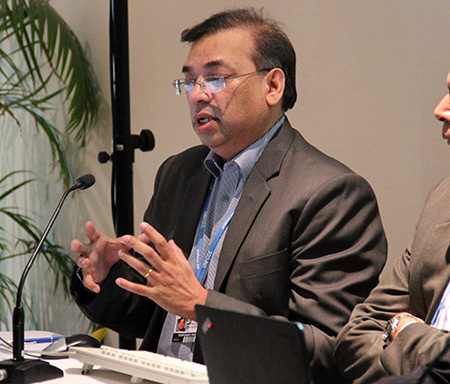|
Co-Facilitator Dany Drouin, Canada, opened the resumed in-session workshop with a recap of the session held on Thursday, 5 June. On collaborative arrangements for managing climate risks, he highlighted: the importance of legal and regulatory frameworks in addressing barriers and the catalytic role played by donor funding; the ability of bespoke financial products to address specific needs such as timing of compensation and identifying opportunities to achieve economies of scale; and the role of the UNFCCC in fostering collaborative arrangements for adaptation finance. On "accessing climate finance: strengthening institutional capacity," he highlighted the importance of a strong relationship between national development banks and local commercial banks, and the need to: further prioritize direct access and adapt the modality to different contexts; engage in facilitated, peer-to-peer support at the national level; and adopt a comprehensive and long-term approach to readiness activities.
Co-Facilitator Zaheer Fakir, South Africa, introduced the topics and presenters. Xavier Agostinho Chavana, Mozambique, and Rafael Marchesini, Brazilian Development Bank (BNDES), presented on policy, legal frameworks, country strategies and priority sectors for investments in climate-resilience. Syed Ahmad, Green Technology Finance Scheme, Malaysia, and Rodrigo Violic, Banco BICE, Chile, presented on the interaction between public and private sectors for scaling-up funding and investments in climate resilience.
Discussing opportunities and barriers for investment in adaptation, Chavana highlighted: differences between the adaptation and disaster risk reduction communities in time horizons and accountability processes, though both seek to increase resilience; policymaking as the entry point to tackle barriers; and the use of Pilot Program on Climate Resilience resources to strengthen existing projects. He also identified lessons learned, including: the need for policies and plans to be approved at the highest possible level; advantages of engaging in policy reform while undertaking projects concurrently; and the use of evidence to support interventions in relevant sectors.
Noting that BNDES has been a key tool in the implementation of industrial policy, Marchesini discussed the bank’s three-pillar strategy consisting of a diversified portfolio of financial instruments, coordination efforts with relevant stakeholders, and a robust sectoral analysis. He also discussed various features of the Amazon Fund which BNDES manages, such as: its results-based payments approach; investment in sustainable production to support adaptation; and its governance arrangements including a guidance committee consisting of different governmental and non-governmental stakeholders. He identified three issues that could inform discussions, including: the development of institutional capacity of both national banks and local-level project implementation institutions; the necessity to coordinate with stakeholders while designing policies, regulations and frameworks; and the importance of good governance structures and transparency.
Describing the role of the Green Technology Finance Scheme (GTFS) to promote economic growth and social development, Ahmad said the GTFS, through its certificates program, had lowered cost of borrowing and increased access to finance for the private sector. He noted that US$612 million of the Scheme’s US$1 billion had been allocated to 185 projects in energy, waste and water, building, and transport sectors. He identified the private sector’s lack of familiarity with green technologies as the primary barrier, in addition to the added cost of doing due diligence via third parties. As the GTFS is set to expire this year, Ahmad identified two options for the future: a continuation of its mandate; and the establishment of a specialized green financial institution.
Discussing the Adaptation Fund’s decision not to fund Chile’s proposal in 2014, Violic identified a number of barriers for adaptation finance in the private sector, including: lack of policy incentives to reduce vulnerability; lack of preparedness in various aspects of adaptation such as planning, accessing and delivering finance, and monitoring; and lack of a preventive approach due to poor knowledge regarding climate risks as business risks. He also outlined three levels of climate impacts to the private sector: business continuity such as product and service delays; credit exposure based on the sectoral vulnerability of clients; and emergence of new opportunities. He said the short-term policy focus on mitigation needs to change and identified public-private partnerships as a potential solution.
Two breakout groups on policy, legal frameworks, country strategies, and priority sectors for investments in climate-resilience then convened and were moderated by Athena Ronquillo-Ballesteros World Resources Institute (WRI), and Mirko Ivo Serkovic Werner, Peru, respectively.
Presenting the outcomes of the breakout group discussions, Ronquillo-Ballesteros highlighted: the need for long-term investments based on long-term in-country frameworks with strong inter-ministerial coordination; the role of vertical integration integrating climate risks across ministries; the limitations of traditional environmental impact assessments and the need to shift to strategic environmental assessments; and the importance of investing in human capital and leadership.
Noting that policies were not enough to bring in the private sector, Werner said sustainable returns motivate the private sector and discussed how public-private partnerships could be scaled-up. He also highlighted the role of governments in setting standards to encourage measurement of climate risks and discussed how public and donor finance could be used to design financial instruments to bring in the private sector.
Two breakout groups on the interaction between public and private sectors for scaling-up funding and investments in climate resilience were moderated by David Kaluba, Zambia, and Kate Dowen, UK.
Kaluba discussed the wide range of factors that need to be taken into account when discussing the role of the private sector in adaptation such as: the type of sector, such as agriculture or water; the size of private institutions; and the different incentives and needs specific to the institutions concerned. He underlined the role of risk-reducing measures in encouraging private investment. He also discussed the role of mainstreaming climate risks into laws and policies to facilitate investments that are climate-resilient and remove market distortions to encourage investment, and called for greater research and information generation to support decision-making by public and private sectors.
Dowen emphasized the importance of regulatory environments in encouraging the private sector’s involvement in adaptation and stressed the role of the UNFCCC, via the Green Climate Fund and the Adaptation Fund, to facilitate investments. She underlined the need to contextualize the needs of the private sector and avoid adopting a one-size-fits-all approach, and cautioned that short-term political cycles may work against the long-term horizon needed for effective adaptation.
Closing the session, Fakir noted the unique format of the in-session workshop that allows stakeholders from all corners to discuss climate finance issues together. On the next steps, he said the Co-Facilitators and the Secretariat would produce a report of the workshop for consideration by COP 21 and noted that in-session workshops would continue in 2016 in accordance with the mandate provided by COP 20. | |





